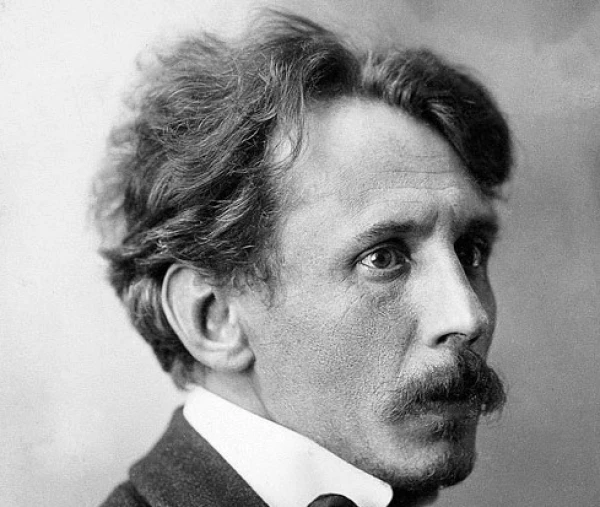
The artist and composer predominantly spoke and wrote in Polish in everyday life.
In honor of the recent 150th anniversary of the birth of Lithuanian artist and composer Mikalojus Konstantinas Čiurlionis (1875–1911), a presentation of the catalog of his entire musical heritage was held at the Palace of the Commonwealth in Warsaw, organized by the National Library of Poland.
The musical heritage of Čiurlionis was compiled by Lithuanian musicologist, pianist, and educator Darius Kučinskas. Čiurlionis is closely connected to Poland in general and Warsaw in particular through his life. He lived, created, and studied here from 1894 to 1901, and then, after a break, from 1902 to 1904.
Darius Kučinskas: The artist spent about 10 years of his life in Warsaw. He studied at the Warsaw Institute of Music (now the Fryderyk Chopin University of Music) and at the School of Fine Arts. He was very happy here, as he had a close circle of friends who understood him. His career also began in Warsaw, so this city played a very important role in his creative development. After 1905, he returned to Lithuania and visited St. Petersburg. He identified himself as a Lithuanian artist and composer. In Warsaw, he was well-known, as he published his first musical editions there and held his first exhibitions of paintings. Thus, he was very active in Warsaw.
Čiurlionis was a world artist and musician in every sense of the word.
Darius Kučinskas: Throughout his life, Čiurlionis was essentially an artist of three nations: Polish, Lithuanian, and Russian. When he lived in Poland, he was perceived here as a Polish artist, in Lithuania as a Lithuanian, and in St. Petersburg as a Russian. However, he himself wrote in a letter to his godfather that he devoted himself wholeheartedly to Lithuania—a country that did not then exist on the map. Today, we are very happy and proud of this choice of his.
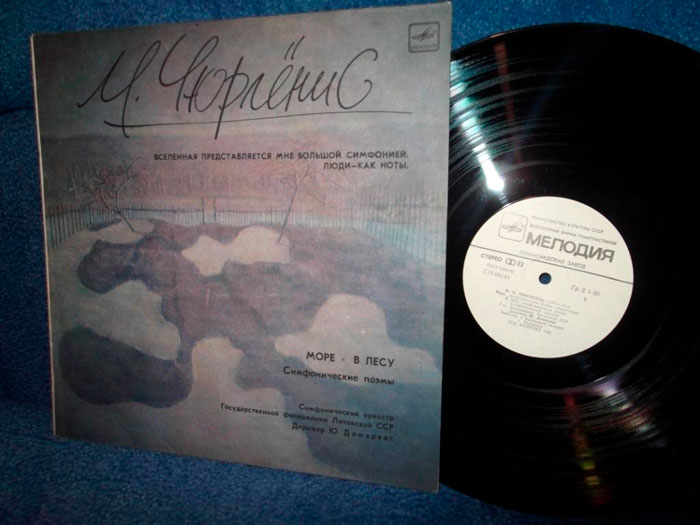
It is no secret to researchers, but a little-known fact for the general public is that Čiurlionis, being Lithuanian, spoke and wrote predominantly in Polish in everyday life. He also referred to himself in Polish—as Kostuś. And while his music does not need translation at all, it is precisely to the Poles that his epistolary heritage is accessible in the original. Nevertheless, Čiurlionis entered history primarily as a figure of Lithuanian culture. Darius Kučinskas explains this phenomenon.
Darius Kučinskas: He felt his belonging to Lithuania, coming from the southern part of Dzūkija, and spoke in the Dzūkian dialect of the Lithuanian language. At that time, various nations were awakening across Europe. This process began in the 19th century and reached its peak in the early 20th century. After the revolutionary changes of that time, Lithuanians and other nations managed to defend their right to speak and write in their native languages. It was a powerful national movement—not only in Lithuania but also in Poland, especially in Warsaw. Many people in our region identified themselves as Lithuanians.
Darius Kučinskas: Čiurlionis is primarily known in the world as an artist.
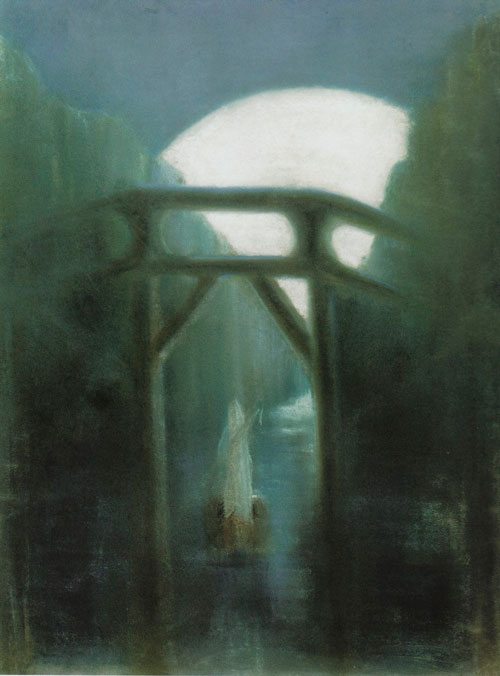
This is related to historical circumstances: his musical works were published only about 50 years after his death, and this delay significantly affected the perception of Čiurlionis as a composer. For a long time, he was not widely recognized in the musical world. However, over the past two decades, the situation has changed. More and more foreign musicians are performing and recording his music. For example, in September of last year, his symphonic poem was performed in Berlin by the French Radio Orchestra. Such events indicate that Čiurlionis is gaining international recognition not only as an artist but also as a composer.
Where can you see original works of Čiurlionis?
Darius Kučinskas: 98% of Čiurlionis's artistic heritage is stored in Lithuania—primarily at the M.K. Čiurlionis National Art Museum in Kaunas. There are his musical manuscripts, paintings, drawings, and various personal materials. Only a few of his works have survived outside Lithuania. For example, two of his paintings are in St. Petersburg. The National Library and the National Museum of Poland also have several exhibits, including two paintings—one from his early period and one from a later period (in the National Museum). But overall, almost all of Čiurlionis's heritage is concentrated in Kaunas—where it is presented most comprehensively.
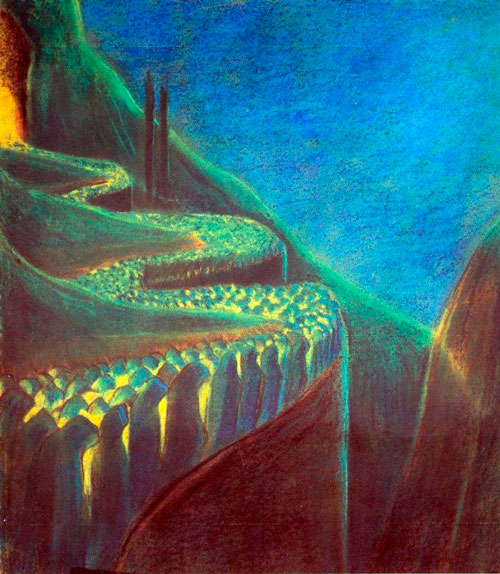
Darius Kučinskas: Čiurlionis is as popular in Lithuania as Chopin is in Poland—especially this year. I see that many musicians and artists want to do something related to Čiurlionis. And I like that he is not only being shown in exhibitions, but more and more art historians, critics, and musicologists are researching his work. Interest is shown not only by Lithuanians but also by Polish, American, and other foreign historians and researchers. Now Čiurlionis is recognized in art history as a very important and unique figure, alongside his contemporaries such as Schönberg and Kandinsky. Čiurlionis did not mention Chopin in his letters, but it is obvious that he knew Chopin's music. There is a copy of Chopin's works made by his brother, as they studied Chopin's music at the Warsaw Institute of Music. Čiurlionis also performed Chopin's works. We do not know exactly which pieces he played, but the style of his music was clearly influenced by Chopin.
And finally, it is worth adding that Mikalojus Konstantinas Čiurlionis also passed away on Polish soil, in the village of Pustelnik, now within the city of Marki, near Warsaw. This was in 1911. The creations of the Lithuanian genius, connected with Poland, live on and continue to delight connoisseurs of beauty.







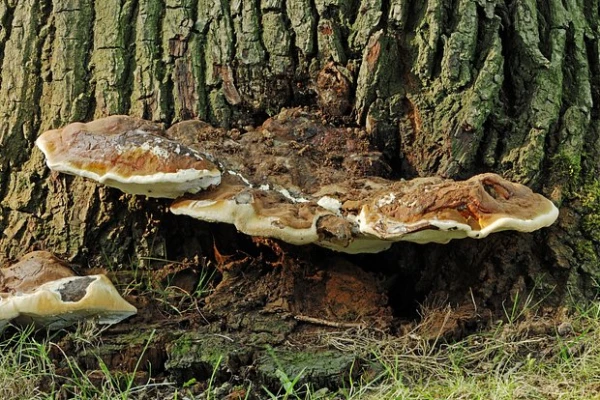





Leave a comment